#Remote Team Management Software
Explore tagged Tumblr posts
Text
How Can Employee Productivity Tracker Streamline Project Management?
In today's dynamic work environment, where deadlines loom and resources are often stretched thin, managing diverse projects with remote employees is one of the biggest challenges for managers. However, a centralized employee productivity tracker can be your trusted ally to monitor how your employees utilize their time and resources. Since this tool provides insightful data in real-time, organizations can seamlessly navigate through the complexities with greater clarity regarding project progress.
Imagine a situation wherein every activity of your employee is visible remotely and a dashboard that paints a clear picture of the team’s performance, hidden insights into workflow, and overall business strategies. Sounds too good to be true, right? An employee tracking solution frees managers from guesswork as it offers accurate insights into the productivity levels of every team member, time taken to complete tasks, and employee performance. Also, it aids in identifying bottlenecks in the workflows.
In this blog, we will highlight practical ways to manage diverse projects with remote employees by utilizing robust features of employee time-tracking apps for your better understanding.
What is Employee Tracking Software?
Monitoring the productivity of your remote employees can be difficult when done manually through calls or emails. With the rising shift towards remote work environments, managers are finding it difficult to enhance work efficiency, drive scalability, and achieve overall business success. Hence, it is imperative for businesses to adapt innovative tools to manage remote teams and enhance productivity.
In addition, TrackOlap employee monitoring software provides insightful data on several parameters in real-time, supporting businesses in making informed decisions and continuously enhancing workflows and other improvements. As a manager, you can observe employees' behavior during working hours, identify areas for improvement in team performance, and ensure the overall business operation thrives.
Lastly, by tracking employees' activities and work efficiency through a central dashboard, managers can save time from constantly following up with employees and maximize ROI.
What Metrics Does Employee Productivity Tracker Record?
As mentioned above, an employee productivity tracker enables businesses to track team activities, productivity levels, and more. This enables managers to consistently track progress over varied projects, identify inaccuracies in real-time, and make adjustments promptly to avoid delayed submissions or interrupted workflows. Let us explore a range of metrics that this software offers to multiple businesses.
Time Utilized: Average time spent on per task or project. Remote work management software offers a seamless data breakdown of where your resources spend time.
Employee’s Idle Time: An employee time tracking app captures the total number of breaks or duration of time off amid working hours to help managers identify unproductive team members
Computer Activity: Tracks website, documents, and applications visited by employees during working hours to determine their active time
Completed Tasks: Based on the overall output delivery, employee tracking solution keeps a record on overall completed tasks to optimize resource allocation strategy for the team
Moreover, employee time-tracking app tends to answer a range of questions with added clarity:
At what time does the team log-in and log-out?
Who are the underperformers and top performers in the team?
What sites is the team viewing, and for how much time?
What resources do we need to acquire project objectives?
Where do we need to focus on to drive better revenue?
You May Also Like: How can Remote Work Management Software Enhance Business Operations?
Why is there a sudden drop in the remote team’s performance?
The metrics of remote work management software collectively offer visibility to the managers for time management and overall productivity of the team to consistently improve business operations, workflows and other aspects hassle-free.
Top Reason Why You Need Employee Productivity Tracker
Maintaining productivity is important for every business irrespective of what you do, and what you offer. It can become a complex process if you work with a remote team. Hence, implementing a robust employee productivity tracker is extremely important in today’s fast-paced world. Let us explore a few benefits of this software.
1. Effective Project Management
Managers can effortlessly manage project schedules and essential assignments through a centralized employee time-tracking app. By accessing historical data on parameters like employee performance, caliber, productivity levels, and more - as a manager, you can schedule tasks or allocate assignments based on the timeframe.
By constantly tracking their activities, you can immediately capture inaccuracies and find alternative solutions without interrupting the project's scheduled workflow.
2. Strategic Resource Allocation
Consistently monitoring employees’ productivity levels through remote work management software aids in identifying areas of h igh and low efficiency in the team. This data will support you with planning strategic resource allocation and ensure equal workload distribution.
In addition, centralized dashboards are an additional benefit for managers to access an overview of the entire team’s activities. Whether it is project deadlines, allocating assignments according to employees' expertise, staffing level, or overall team workload capability, an employee productivity tracker can come to your rescue.
3. Thorough Performance Analysis
Are you looking to re-align your allocation process? Access productivity levels and overall output delivered by your team members in previous weeks or months to determine their performance. Additionally, through graphically-rich reports, you will have a better picture of the overall team’s progress and encourage them to perform better from these analytics to drive better outcomes.
4. Assess Return on Investment (ROI)
By tracking your team’s productivity levels through employee tracking solutions, you can also analyze the effectiveness of the investment you made in varied tools, resources, and more. Yes, you heard it right! You can evaluate the overall output delivered by your team, their efforts, or work efficiency to understand the profitability of your projects and make better decisions for future endeavors.
5. Evaluate Workload Balance & Employee Burnouts
If your resource allocation strategy isn't optimized, or if you fail to manage equal workload within your team, your employees may feel burnout very frequently, which can ultimately affect their well-being.
However, many factors can lead to employee burnout, such as an imbalance in workload for a longer period of time. When you track productivity levels, if you observe uneven results, such as high-performers being unproductive or a sudden drop in overall output delivery, then it is an indication that they are on the edge of experiencing burnout.
Hence, it is important to set a realistic timeline for every delegated task, track achievable targets promptly, and ensure every employee has a suitable workload that is important for achieving project success.
6. Track Goals and Achievements
Tackling your employees' efficiency levels aids in setting realistic goals. Regularly measuring progress for these objectives will keep you aligned with minute progress. Additionally, evaluating reports like productivity vs. targets acquired assists in motivating employees to work closely to achieve specific goals and encourages teams to be accountable for certain aspects.
How to Manage Projects with Employee Tracking Solutions?
TrackOlap provides comprehensive software to manage projects, remote teams, and upscale business profitability with robust features. However, this software goes beyond productivity or time tracking as it offers valuable insights on many parameters that might otherwise go untapped.
1. Tracks Time Autonomously
It is important to understand your objectives before you implement varied strategies. Based on your objectives, consider integrating a time tracker like TrackOlap to foster accountability and transparency into the workflow and avoid interrupting your employees' privacy.
Since this software seamlessly tracks computer usage by activities, visited sites, documents, or apps, it helps managers access the active time of every employee. This can be helpful for organizations that have team members from different time zones. Moreover, these features remove the process of back-and-forth follow-ups, manual log-ins, and updating progress on every task.
2. Setting Productivity Benchmarks
Employee tracking solutions simplify the process of identifying when employees are productive and when they trick the team with time theft. This can help managers address such concerns in real-time and collaborate with employees in 1:1 sessions to boost business growth.
By encouraging employees to perform better and focusing on activities for employee development, you are likely to set high benchmarks for employee productivity. This approach will encourage team members to perform better and be focused, especially when their efforts are acknowledged and appreciated with a certain level of recognition. Ultimately, all these aspects will lead to better revenue, satisfied clients, and retained employees.
3. Effective Project Budgeting
Managers can conduct a thorough project cost analysis through data-driven reports based on the employee's performance, productivity levels, and amount of output delivered in previous months. Based on this analysis, businesses can estimate an average feasible timeline to complete a project without causing burnout among team members and an overall budget to ensure you achieve significant profitability with your existing team.
4. Customized Reporting and Analysis
Whether you want to determine the effectiveness of your resource allocation strategy, workflow efficiency, productivity levels, employee accountability, or team performance - TrackOlap simplifies the evaluation process by offering a robust feature for creating customizable reports based on specific parameters.
Moreover, a centralized dashboard offers an overview and statistics that give the organizations a clear picture of varied aspects and departments, supporting consistently making informed decisions hassle-free.
Final Thoughts
In today’s dynamic environment, an employee productivity tracker is valuable for businesses. It not only enhances productivity levels but also offers accurate data on work output and the effectiveness of varied strategies with clear visibility. Moreover, managers can easily manage teams and projects without micromanaging daily, thanks to features like idle time tracking, customized reports, and more metrics.
Transform your business profitability and change how you manage projects by adopting a time-tracking tool into your system. Contact us to get a quick demo of these features today!
#employee time tracking software#Lead automation app#Employee Productivity Tracker#employee time tracking app#system idle time tracking software#employee monitoring software#employee time tracker#remote work management software#remote team management software
0 notes
Text
Empower Your Business with Dedicated IT Resources from Quarec Resources Pvt. Ltd.

At Quarec Resources Pvt. Ltd., we provide top-tier Dedicated IT Resources to propel your business forward. Our skilled IT professionals seamlessly integrate with your team, offering expertise in software development, system administration, network management, and more. By choosing our dedicated resources, you gain flexibility, cost-efficiency, and the ability to swiftly adapt to evolving technological demands. Partner with Quarec to ensure your IT operations are robust, scalable, and aligned with your strategic goals.
#Dedicated IT Resources#IT Staff Augmentation#Dedicated IT#Software Development Team#System Administration Services#Network Management Solutions#IT Outsourcing#Remote IT Support#IT Consulting#Cloud Computing Services#Cybersecurity Solutions#Data Analytics Services#IT Project Management#Technical Support Services#IT Infrastructure Management
0 notes
Text
How AI Can Book Meetings While You Sleep
How AI Can Book Meetings While You Sleep We need to talk about one of the biggest time-wasters in business; back-and-forth scheduling. You know the drill: “Does Tuesday at 3 work?” “No, what about Thursday at 10?” “Actually, can we do next week instead?” By the time you finally lock in a meeting, you’ve burned 15 emails and at least two brain cells. But what if I told you AI can handle…
#AI appointment scheduling#AI booking software#AI business automation#AI business hacks#AI business tools#AI calendar automation#AI calendar integration#AI calendar management#AI client scheduling#AI executive assistant#AI for business growth#AI for consultants#AI for entrepreneurs#AI for remote work#AI for sales teams#AI for service-based business#AI for small business#AI meeting automation#AI meeting coordination#AI meeting efficiency#AI meeting planner#AI productivity tools#AI sales automation#AI scheduling#AI scheduling apps#AI scheduling assistant#AI scheduling software#AI scheduling solutions#AI time management#AI time-saving tools
1 note
·
View note
Text
Remote Work Essentials: Tools and Tips for Success
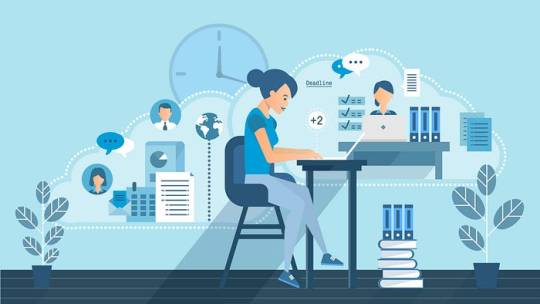
With the onslaught of remote work, days are gone when companies required their workers to come to their offices daily. While working from home may not always be the most helpful and productive way to work, it offers much flexibility for efficient collaboration and effective task management. Working remotely requires the right tools and strategies that one must implement in order to succeed. In this blog, we will explore the must-have remote work tools, along with some actionable tips for getting things done.The Importance of Remote Work Preparedness
The Importance of Remote Work Preparedness
Remote work isn’t merely about logging in from home; it’s about creating a functional, productive, and collaborative workspace, no matter where you are.
Having proper tools in place enables seamless communication, task management, and data security. Equally important, having the right habits and best practices allows you to focus, be efficient, and partner with your team.

Remote Work Toolkit: Essential Tools for Success
Let’s dive into the key categories of tools you need to stay organized, productive, and connected while working remotely.
1. Project Management Tools
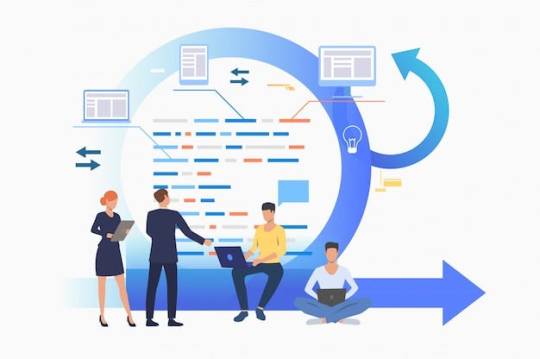
Remote teams thrive on clear structure and collaboration, making it possible to manage tasks and projects using collaborative tools. The project management tool is the heart of the team, where work can be assigned to someone, the status tracked, deadlines set, and communication facilitated.
Here are some top suggestions:
TeamCamp: A modern project management tool for remote teams, enabling task tracking, collaboration, and goal setting, direct from our blog on Best Project Management Tools for Remote Teams.
Trello: It is the Kanban board-based visual task management tool, perfect for organizing workflow.
ClickUp: A feature-rich platform that brings task tracking, team collaboration, and time management into one place
Asana: Great for project planning, tracking individual contributions, and ensuring deadlines are met.
2. Communication and Collaboration Tools
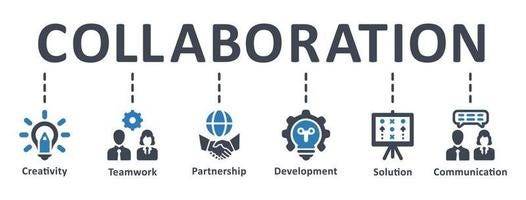
Strong communication is the cornerstone of remote work success. When in-person discussions are off the table, virtual communication tools step in to bridge the gap.
Popular options include:
Slack: Offers instant messaging, file sharing, and app integrations to keep teams connected.
Zoom: Ideal for video conferencing, webinars, and team meetings.
Microsoft Teams: A versatile communication tool combining chat, video calls, and Office 365 integrations.
Google Workspace (Google Meet, Chat, etc.): Provides seamless collaboration across Gmail, Docs, and Meet.
3. Time Management and Productivity Tools

Working from home comes with its fair share of distractions. Time management tools can help you focus, stay organized, and make the most of your day.
Top time management tools include:
Toggl Track: Helps you monitor how much time you spend on tasks.
Focus@Will: A productivity app that combines neuroscience and music to improve focus.
RescueTime: Tracks your daily activities to provide insights into how you spend your time.
Clockify: A free time-tracking app that helps you keep tabs on billable hours.
4. File Storage and Sharing Tools
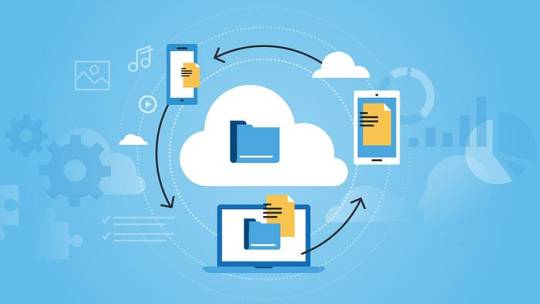
In a remote setup, sharing and storing documents securely is crucial for smooth workflows. Cloud storage solutions make it easy to access files anytime, anywhere.
Some reliable options include:
Google Drive: Offers free storage and real-time collaboration on documents.
Dropbox: A cloud storage platform with file syncing and sharing capabilities.
OneDrive: Microsoft’s cloud solution that integrates with Office applications.
Box: A secure option for file sharing and collaboration, often used by enterprises.
5. Cybersecurity and Privacy Tools
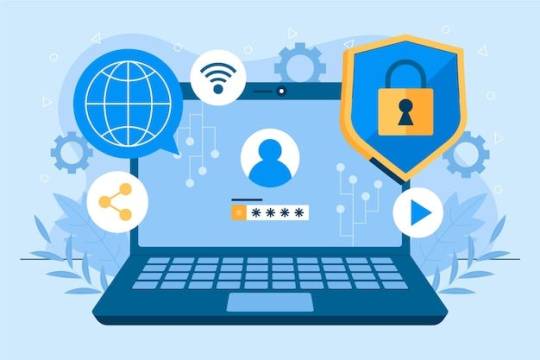
When working remotely, safeguarding sensitive data and ensuring secure connections is critical. Cybersecurity tools help protect your devices and online activities from potential threats.
Key tools include:
VPNs (Virtual Private Networks): Services like NordVPN or ExpressVPN encrypt your internet connection, protecting your data.
Password Managers: Tools like LastPass or 1Password help manage secure credentials for all your accounts.
Antivirus Software: Options like Bitdefender or Kaspersky ensure your devices are protected from malware.
Two-Factor Authentication (2FA): Many platforms, including Google and Microsoft, offer built-in 2FA options for added security.
6. Wellness and Focus Tools

Burnout is a common challenge in remote work. Wellness and focus tools help you maintain mental and physical well-being while staying productive.
Examples include:
Headspace or Calm: Meditation apps to manage stress and enhance focus.
Stretchly: A tool that reminds you to take regular breaks during long work hours.
Habitica: A gamified app to help you build better habits and stay motivated.
Tips for Thriving in Remote Work
Having the right tools is half the battle — developing productive habits and a balanced routine is equally important. Here are some practical tips for remote work success:
1. Set Clear Boundaries
Define your working hours and communicate them with your team and family. This helps prevent overwork and ensures time for personal life.
2. Create a Dedicated Workspace
Set up a quiet and distraction-free area to work. A proper desk and ergonomic chair can improve posture and productivity.
3. Leverage Automation
Use automation tools like Zapier to integrate apps and reduce repetitive tasks, freeing up more time for critical work.
4. Overcommunicate
In remote work, it’s better to communicate too much than too little. Provide frequent updates on tasks, ask questions, and keep the team in the loop.
5. Take Regular Breaks
Follow the Pomodoro Technique or simply take short breaks to recharge. Stretch, hydrate, or step outside for fresh air.
6. Upskill Yourself
Use online platforms like Coursera or LinkedIn Learning to develop new skills relevant to your job. Remote work often requires tech-savvy professionals.
Frequently Asked Questions (FAQs)
1. What are the most important tools for remote work?
Essential tools include project management platforms like TeamCamp or Trello, communication tools like Slack or Zoom, and file-sharing solutions like Google Drive or Dropbox.
2. How can I stay motivated while working remotely?
Set daily goals, use productivity tools, and maintain a dedicated workspace. Also, ensure regular breaks and focus on self-care to prevent burnout.
3. How do I improve collaboration in remote teams?
Use tools like Slack for communication, Zoom for meetings, and project management software like Asana or ClickUp to ensure clarity and teamwork.
4. How do I maintain work-life balance in a remote setup?
Define clear working hours, create a separate workspace, and make time for hobbies, family, and relaxation.
5. How do I ensure data security while working remotely?
Use VPNs, enable two-factor authentication, and use antivirus software to protect your devices. Store files securely on trusted cloud platforms.
Author detail:
by Pratham Naik ( Project Manager , Content writer )
#project management#remote work#remote teams#agile project management#project management tool for remote team#task management#team management#project management software
1 note
·
View note
Text

Master Skills with Virtual Training
This infographic highlights the transformative benefits of virtual training in mastering new skills.
0 notes
Text
ONLYOFFICE
In today’s fast-paced digital landscape, businesses and individuals need versatile tools to manage documents, collaborate efficiently, and enhance productivity. ONLYOFFICE is a robust office suite that caters to these needs, offering a blend of document management, collaboration, and integration capabilities. This article dives into what ONLYOFFICE is, its key features, benefits, and use…
#business software solutions#cloud-based office suite#CRM integration#cross-platform office suite#document collaboration#document editing software#document management#educational collaboration software#Microsoft Office alternative#office suite#ONLYOFFICE#ONLYOFFICE benefits#ONLYOFFICE features#open-source office software#Productivity Tools#project management tools#real-time editing#remote team tools#secure office suite#team collaboration software
0 notes
Text
Boost Your Productivity with These Tools
Boost your business productivity with these 10 must-have tools! From Trello to Slack, learn how to streamline your operations and save time with the best apps.
Boost Your Productivity with These Tools Written By: that Hannah Jones Time to Read: 7 minutes Running a business or managing a team is no small feat, especially when juggling multiple tasks, projects, and deadlines. With so much to manage, productivity tools are no longer just “nice-to-haves”—they’re essential for keeping your operations streamlined and efficient. Whether you’re looking to…
#app integration tools#Asana project management#automation tools for business#best productivity apps#best tools for entrepreneurs#business apps for entrepreneurs#business efficiency tools#business growth tools#business workflow tools#digital productivity apps#Evernote for note-taking#Google Workspace tips#improving business efficiency#Monday.com workflows#Notion for knowledge sharing#productivity hacks#productivity strategies#productivity tools for business#project planning tools#RescueTime focus app#Slack for communication#small business tools#task management apps#team collaboration apps#time management software#time tracking tools#tools for entrepreneurs#tools for remote teams#Trello for project management#Zapier automation
0 notes
Text
Jayson Murphy IT service

Website: http://jaysonmurphyitservicer.com/
Address: 609 New York Ave, Brooklyn, NY 11203, USA
Phone: 917-577-3337
Jayson Murphy IT Service is a comprehensive provider of managed IT solutions tailored to meet the unique needs of businesses. With a focus on enhancing operational efficiency and ensuring robust cybersecurity, we offer a range of services including network management, cloud solutions, data backup, and IT consulting. Our team of experienced professionals is dedicated to delivering reliable support and innovative technology strategies that empower organizations to thrive in a digital landscape. At Jayson Murphy IT Service, we prioritize customer satisfaction and work closely with our clients to develop customized solutions that drive growth and success.
Business Email: [email protected]
Facebook: https://facebook.com/abdulmanufacturerlimited
Twitter: https://twitter.com/abdulmanufacturerlimited
Instagram: https://instagram.com/abdulmanufacturerlimited
TikTok: https://tiktok.com/@abdulmanufacturerl
#IT services#Managed IT services#IT support#IT consulting#Technology solutions#IT staff training#Cybersecurity training#Software training workshops#Technology bootcamps#IT certification programs#Custom software development#E-commerce solutions#CRM implementation#Workflow automation solutions#Digital transformation services#IT performance monitoring#Network monitoring tools#Application performance analysis#IT health checks#Data analytics services#Brooklyn NY IT services#IT support in Brooklyn NY#Managed IT services Brooklyn NY#Cybersecurity Brooklyn NY#IT consulting Brooklyn NY#Remote work solutions#Team collaboration tools#Video conferencing solutions#Unified communication systems#Project management software
1 note
·
View note
Text
Instaboard is a cutting-edge SaaS platform that revolutionizes remote collaboration. It seamlessly integrates infinite digital whiteboards, smart project management tools, and built-in video conferencing into one intuitive workspace. Designed for teams of all sizes, Instaboard boosts productivity, enhances creativity, and simplifies workflow by allowing users to brainstorm, plan, and execute projects in a single, dynamic environment. With features like real-time collaboration, customizable workspaces, and effortless sharing, Instaboard is the ultimate solution for modern, distributed teams seeking to work more efficiently and effectively.
#Remote collaboration software#Digital whiteboard platform#Virtual team workspace#Real-time project management tool#Video conferencing integration#Interactive brainstorming tool#Cloud-based productivity suite
0 notes
Text
Enhance Creativity with a Digital Whiteboard Platform

Gone are the days of physical whiteboards cluttering up meeting rooms. Today’s businesses need something more flexible, accessible, and powerful. That’s where a digital whiteboard platform like InstaBoard.app comes in. Designed for both creativity and productivity, our digital whiteboard offers an innovative space for your team to brainstorm, strategize, and collaborate without limits.
At InstaBoard.app, we believe in the power of visuals to spark innovation. Our digital whiteboard platform allows you to draw, write, and organize your ideas just as you would on a traditional whiteboard – but with added features. The platform supports images, sticky notes, and collaborative editing, making it a hub for real-time creativity.
Imagine your team working on a big idea: each member can contribute to the whiteboard, move elements around, and engage in discussions, all within the same digital space. And the best part? All changes are automatically saved and accessible from anywhere.
Why choose a digital whiteboard platform?
Collaboration: Multiple users can contribute simultaneously.
Flexibility: Adapt your workspace to suit your project’s needs.
Cloud-based: Access your whiteboard from any device, anytime.
With InstaBoard.app’s digital whiteboard platform, creativity doesn’t stop when the meeting ends. You can continue refining your ideas at your own pace and always stay one step ahead.
#Remote collaboration software#Digital whiteboard platform#Virtual team workspace#Real-time project management tool#Video conferencing integration#Interactive brainstorming tool#Cloud-based productivity suite
1 note
·
View note
Text

Discover how Workstatus can transform your remote work experience. "Maximizing Efficiency: Key Benefits of Remote Work Software" delves into how our cutting-edge solutions enhance productivity, streamline task management, and foster seamless team collaboration from anywhere. With Workstatus, you gain real-time insights, efficient tracking, and a unified platform to keep your remote workforce engaged and accountable. Explore how our software can help you achieve higher efficiency and success in the evolving remote work landscape.
0 notes
Text
The Future of Work: Technology and Remote Collaboration
Introduction
The future of work is rapidly evolving, driven by technological advancements and the increasing popularity of remote collaboration. At TechtoIO, we delve into how these changes are shaping the workplace, impacting productivity, and altering traditional work paradigms. This blog post explores the key technologies enabling remote work and the benefits and challenges associated with this new way of working. Read to continue link
#Innovation Insights#Tagsbenefits of remote work#cloud computing for remote work#communication tools for remote work#cybersecurity for remote work#effective remote collaboration strategies#employee satisfaction remote work#future of remote work#future of work#project management software#remote collaboration#remote collaboration tools#remote team management#remote work challenges#remote work cost savings#remote work innovations#remote work productivity#remote work technology#remote work tools#remote work trends#Technology#Science#business tech#Adobe cloud#Trends#Nvidia Drive#Analysis#Tech news#Science updates#Digital advancements
1 note
·
View note
Text
Finding it difficult to manage your offshore software development team? Time-zone differences, miscommunication, and micromanagement make offshore team management challenging. We bring you effective strategies to make offshore software development team management easy. Check above and conquer offshore team management like a pro!
#Offshore solutions#Offshore team#Manage Offshore team#Remote Developers#Offshore Developers#Software Solutions
1 note
·
View note
Text
REMOTE WORK - OPPORTUNITIES AND CHALLENGES FOR DEVELOPMENT COMPANIES | iFour Technolab

One of the challenges that remote employees of Software Development companies face is overwork. It becomes difficult to balance work and life when it is under the same roof. Even though working from home means working on different days or hours, and being flexible. But some employees tend to spend more time on work during the day which is not required. Due to this, they feel exhausted, sleep-deprived, and lack of personal time.
The workload does not allow the employee to focus on the essential tasks and leads to a significant decrease in productivity.
#Uw zoekopdracht eindigt hier#frantic teamwork brainstorming sessions#Build Angular Reactive Templates#include bad internet connections#organized remote team set#Heading upwards remote work#Software Ontwikkeling Diensten#Software Development companies face#include team members sharing#completely remote team set-up#use project management tools#team speaks different languages#collaboration tools available#Software Outsourcing Experiences#software development companies#promote real-time connectivity#Angular Dependency Providers#innovative technological tools
1 note
·
View note
Text
definitely one of the most difficult moments of my professional career was when i was doing tech support for [REDACTED]'s automated biomed research lab and like. hang on lemme greentext this
>tell them i can fix this issue in half an hour with a remote support session (aka Teamviewer)
>"you want to... control our computers???? over the internet????? like some kind of HACKER???????"
>their IT submits my request to upper management and after two weeks they reluctantly allow me to get remote access to their systems
>by logging into a virtual machine using a 20-digit password and then using a specific program inside of that virtual machine
>while sharing my screen with someone from their IT team the entire time
>finally get remote access to the PC with the issue
>go to open log files to start troubleshooting
>ERROR: User does not have read permissions.
>what the fuck
>ask their IT guy why it's saying that
>"...because we don't want you looking at our stuff, duh?"
>take deep breath before calmly explaining that i need to open files in order to fix their problem
>IT guy submits my request to upper management
>after another week i go through the whole process again but can actually open the log file this time
>cool, it's exactly the issue i thought it was and i know exactly how to solve it
>open the relevant settings file, change a single number, hit Save
>ERROR: User does not have write permissions.
>what the FUCK
>ask IT guy how i'm supposed to fix their system if i can't change literally anything on it
>takes 20 minutes of arguing to get him to admit that maybe i need write access
>he submits the request to upper management
>a week goes by
>upper management denies it
>says i can just verbally tell the IT guy on the call what to type and he'll do it for me
>deep breaths. deep breaths.
>start third remote session
>go to open the relevant .log file in notepad, which isn't the default program it opens with for some reason
>they fucking disabled right clicking
>[REDACTED] has a $118 billion market cap btw
>manage to walk the IT guy through using the command line (which he had never seen before and was scared of) to edit the relevant file
>three weeks go by
>new support ticket in my inbox
>"why didn't your fix fix this completely unrelated issue?"
>they still won't give me write access
>VP of [REDACTED] yells at me in our weekly meeting for taking so long to fix a third unrelated issue they never submitted a ticket for and is also not actually an "issue" but an intended feature of our software that they don't like
>i went to college for this
#second worst part of that job was getting emails from a customer like#“hey can you bump our ticket to the top of the queue? it's really impacting our ability to do research. no pressure though! :)”#and then i'd check who it's from and it's fucking St. Jude's Children's Hospital#“no pressure but you are directly killing kids with cancer”
254 notes
·
View notes
Text
Demon-haunted computers are back, baby

Catch me in Miami! I'll be at Books and Books in Coral Gables on Jan 22 at 8PM.

As a science fiction writer, I am professionally irritated by a lot of sf movies. Not only do those writers get paid a lot more than I do, they insist on including things like "self-destruct" buttons on the bridges of their starships.
Look, I get it. When the evil empire is closing in on your flagship with its secret transdimensional technology, it's important that you keep those secrets out of the emperor's hand. An irrevocable self-destruct switch there on the bridge gets the job done! (It has to be irrevocable, otherwise the baddies'll just swarm the bridge and toggle it off).
But c'mon. If there's a facility built into your spaceship that causes it to explode no matter what the people on the bridge do, that is also a pretty big security risk! What if the bad guy figures out how to hijack the measure that – by design – the people who depend on the spaceship as a matter of life and death can't detect or override?
I mean, sure, you can try to simplify that self-destruct system to make it easier to audit and assure yourself that it doesn't have any bugs in it, but remember Schneier's Law: anyone can design a security system that works so well that they themselves can't think of a flaw in it. That doesn't mean you've made a security system that works – only that you've made a security system that works on people stupider than you.
I know it's weird to be worried about realism in movies that pretend we will ever find a practical means to visit other star systems and shuttle back and forth between them (which we are very, very unlikely to do):
https://pluralistic.net/2024/01/09/astrobezzle/#send-robots-instead
But this kind of foolishness galls me. It galls me even more when it happens in the real world of technology design, which is why I've spent the past quarter-century being very cross about Digital Rights Management in general, and trusted computing in particular.
It all starts in 2002, when a team from Microsoft visited our offices at EFF to tell us about this new thing they'd dreamed up called "trusted computing":
https://pluralistic.net/2020/12/05/trusting-trust/#thompsons-devil
The big idea was to stick a second computer inside your computer, a very secure little co-processor, that you couldn't access directly, let alone reprogram or interfere with. As far as this "trusted platform module" was concerned, you were the enemy. The "trust" in trusted computing was about other people being able to trust your computer, even if they didn't trust you.
So that little TPM would do all kinds of cute tricks. It could observe and produce a cryptographically signed manifest of the entire boot-chain of your computer, which was meant to be an unforgeable certificate attesting to which kind of computer you were running and what software you were running on it. That meant that programs on other computers could decide whether to talk to your computer based on whether they agreed with your choices about which code to run.
This process, called "remote attestation," is generally billed as a way to identify and block computers that have been compromised by malware, or to identify gamers who are running cheats and refuse to play with them. But inevitably it turns into a way to refuse service to computers that have privacy blockers turned on, or are running stream-ripping software, or whose owners are blocking ads:
https://pluralistic.net/2023/08/02/self-incrimination/#wei-bai-bai
After all, a system that treats the device's owner as an adversary is a natural ally for the owner's other, human adversaries. The rubric for treating the owner as an adversary focuses on the way that users can be fooled by bad people with bad programs. If your computer gets taken over by malicious software, that malware might intercept queries from your antivirus program and send it false data that lulls it into thinking your computer is fine, even as your private data is being plundered and your system is being used to launch malware attacks on others.
These separate, non-user-accessible, non-updateable secure systems serve a nubs of certainty, a remote fortress that observes and faithfully reports on the interior workings of your computer. This separate system can't be user-modifiable or field-updateable, because then malicious software could impersonate the user and disable the security chip.
It's true that compromised computers are a real and terrifying problem. Your computer is privy to your most intimate secrets and an attacker who can turn it against you can harm you in untold ways. But the widespread redesign of out computers to treat us as their enemies gives rise to a range of completely predictable and – I would argue – even worse harms. Building computers that treat their owners as untrusted parties is a system that works well, but fails badly.
First of all, there are the ways that trusted computing is designed to hurt you. The most reliable way to enshittify something is to supply it over a computer that runs programs you can't alter, and that rats you out to third parties if you run counter-programs that disenshittify the service you're using. That's how we get inkjet printers that refuse to use perfectly good third-party ink and cars that refuse to accept perfectly good engine repairs if they are performed by third-party mechanics:
https://pluralistic.net/2023/07/24/rent-to-pwn/#kitt-is-a-demon
It's how we get cursed devices and appliances, from the juicer that won't squeeze third-party juice to the insulin pump that won't connect to a third-party continuous glucose monitor:
https://arstechnica.com/gaming/2020/01/unauthorized-bread-a-near-future-tale-of-refugees-and-sinister-iot-appliances/
But trusted computing doesn't just create an opaque veil between your computer and the programs you use to inspect and control it. Trusted computing creates a no-go zone where programs can change their behavior based on whether they think they're being observed.
The most prominent example of this is Dieselgate, where auto manufacturers murdered hundreds of people by gimmicking their cars to emit illegal amount of NOX. Key to Dieselgate was a program that sought to determine whether it was being observed by regulators (it checked for the telltale signs of the standard test-suite) and changed its behavior to color within the lines.
Software that is seeking to harm the owner of the device that's running it must be able to detect when it is being run inside a simulation, a test-suite, a virtual machine, or any other hallucinatory virtual world. Just as Descartes couldn't know whether anything was real until he assured himself that he could trust his senses, malware is always questing to discover whether it is running in the real universe, or in a simulation created by a wicked god:
https://pluralistic.net/2022/07/28/descartes-was-an-optimist/#uh-oh
That's why mobile malware uses clever gambits like periodically checking for readings from your device's accelerometer, on the theory that a virtual mobile phone running on a security researcher's test bench won't have the fidelity to generate plausible jiggles to match the real data that comes from a phone in your pocket:
https://arstechnica.com/information-technology/2019/01/google-play-malware-used-phones-motion-sensors-to-conceal-itself/
Sometimes this backfires in absolutely delightful ways. When the Wannacry ransomware was holding the world hostage, the security researcher Marcus Hutchins noticed that its code made reference to a very weird website: iuqerfsodp9ifjaposdfjhgosurijfaewrwergwea.com. Hutchins stood up a website at that address and every Wannacry-infection in the world went instantly dormant:
https://pluralistic.net/2020/07/10/flintstone-delano-roosevelt/#the-matrix
It turns out that Wannacry's authors were using that ferkakte URL the same way that mobile malware authors were using accelerometer readings – to fulfill Descartes' imperative to distinguish the Matrix from reality. The malware authors knew that security researchers often ran malicious code inside sandboxes that answered every network query with fake data in hopes of eliciting responses that could be analyzed for weaknesses. So the Wannacry worm would periodically poll this nonexistent website and, if it got an answer, it would assume that it was being monitored by a security researcher and it would retreat to an encrypted blob, ceasing to operate lest it give intelligence to the enemy. When Hutchins put a webserver up at iuqerfsodp9ifjaposdfjhgosurijfaewrwergwea.com, every Wannacry instance in the world was instantly convinced that it was running on an enemy's simulator and withdrew into sulky hibernation.
The arms race to distinguish simulation from reality is critical and the stakes only get higher by the day. Malware abounds, even as our devices grow more intimately woven through our lives. We put our bodies into computers – cars, buildings – and computers inside our bodies. We absolutely want our computers to be able to faithfully convey what's going on inside them.
But we keep running as hard as we can in the opposite direction, leaning harder into secure computing models built on subsystems in our computers that treat us as the threat. Take UEFI, the ubiquitous security system that observes your computer's boot process, halting it if it sees something it doesn't approve of. On the one hand, this has made installing GNU/Linux and other alternative OSes vastly harder across a wide variety of devices. This means that when a vendor end-of-lifes a gadget, no one can make an alternative OS for it, so off the landfill it goes.
It doesn't help that UEFI – and other trusted computing modules – are covered by Section 1201 of the Digital Millennium Copyright Act (DMCA), which makes it a felony to publish information that can bypass or weaken the system. The threat of a five-year prison sentence and a $500,000 fine means that UEFI and other trusted computing systems are understudied, leaving them festering with longstanding bugs:
https://pluralistic.net/2020/09/09/free-sample/#que-viva
Here's where it gets really bad. If an attacker can get inside UEFI, they can run malicious software that – by design – no program running on our computers can detect or block. That badware is running in "Ring -1" – a zone of privilege that overrides the operating system itself.
Here's the bad news: UEFI malware has already been detected in the wild:
https://securelist.com/cosmicstrand-uefi-firmware-rootkit/106973/
And here's the worst news: researchers have just identified another exploitable UEFI bug, dubbed Pixiefail:
https://blog.quarkslab.com/pixiefail-nine-vulnerabilities-in-tianocores-edk-ii-ipv6-network-stack.html
Writing in Ars Technica, Dan Goodin breaks down Pixiefail, describing how anyone on the same LAN as a vulnerable computer can infect its firmware:
https://arstechnica.com/security/2024/01/new-uefi-vulnerabilities-send-firmware-devs-across-an-entire-ecosystem-scrambling/
That vulnerability extends to computers in a data-center where the attacker has a cloud computing instance. PXE – the system that Pixiefail attacks – isn't widely used in home or office environments, but it's very common in data-centers.
Again, once a computer is exploited with Pixiefail, software running on that computer can't detect or delete the Pixiefail code. When the compromised computer is queried by the operating system, Pixiefail undetectably lies to the OS. "Hey, OS, does this drive have a file called 'pixiefail?'" "Nope." "Hey, OS, are you running a process called 'pixiefail?'" "Nope."
This is a self-destruct switch that's been compromised by the enemy, and which no one on the bridge can de-activate – by design. It's not the first time this has happened, and it won't be the last.
There are models for helping your computer bust out of the Matrix. Back in 2016, Edward Snowden and bunnie Huang prototyped and published source code and schematics for an "introspection engine":
https://assets.pubpub.org/aacpjrja/AgainstTheLaw-CounteringLawfulAbusesofDigitalSurveillance.pdf
This is a single-board computer that lives in an ultraslim shim that you slide between your iPhone's mainboard and its case, leaving a ribbon cable poking out of the SIM slot. This connects to a case that has its own OLED display. The board has leads that physically contact each of the network interfaces on the phone, conveying any data they transit to the screen so that you can observe the data your phone is sending without having to trust your phone.
(I liked this gadget so much that I included it as a major plot point in my 2020 novel Attack Surface, the third book in the Little Brother series):
https://craphound.com/attacksurface/
We don't have to cede control over our devices in order to secure them. Indeed, we can't ever secure them unless we can control them. Self-destruct switches don't belong on the bridge of your spaceship, and trusted computing modules don't belong in your devices.

I'm Kickstarting the audiobook for The Bezzle, the sequel to Red Team Blues, narrated by @wilwheaton! You can pre-order the audiobook and ebook, DRM free, as well as the hardcover, signed or unsigned. There's also bundles with Red Team Blues in ebook, audio or paperback.

If you'd like an essay-formatted version of this post to read or share, here's a link to it on pluralistic.net, my surveillance-free, ad-free, tracker-free blog:
https://pluralistic.net/2024/01/17/descartes-delenda-est/#self-destruct-sequence-initiated

Image: Mike (modified) https://www.flickr.com/photos/stillwellmike/15676883261/
CC BY-SA 2.0 https://creativecommons.org/licenses/by-sa/2.0/
#pluralistic#uefi#owner override#user override#jailbreaking#dmca 1201#schneiers law#descartes#nub of certainty#self-destruct button#trusted computing#secure enclaves#drm#ngscb#next generation secure computing base#palladium#pixiefail#infosec
576 notes
·
View notes